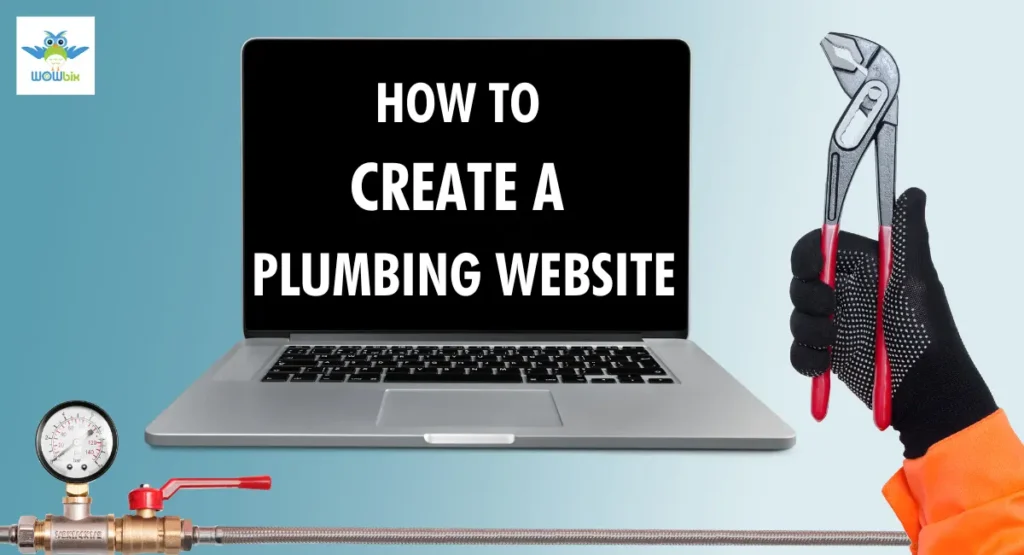If you want to have an online presence for your plumbing company and connect with potential customers, creating a plumbing website is necessary. You can have a website up and running with this guide. We have put down 9 solid steps to help you learn how to create a professional plumbing website.
This guide will walk you through choosing a domain name hosting and designing your website. It will also cover adding content, performing SEO, and more. Whether a small plumbing business or a large corporation, this guide will give you the tools to establish an online presence and reach more customers.
Let’s get started.
Step 1: Selecting a Hosting Provider and a Domain Name
The process of developing a website begins with the selection of a domain name and hosting service. People will go to the address associated with your domain name to locate your website, and hosting is where the files for your website will be kept. You have many options to choose from when it comes to hosting and domain name providers. GoDaddy and Inmotion are a few good ones.
Choosing the right domain name for your plumbing website
It is essential to choose a domain name that is not only simple to memorize & also does an excellent job representing your company while making your choice. You must think about the suffix that will be added to the end of your domain name, such as.com or.net. In addition, selecting a trustworthy hosting company is of the utmost importance to ensure your website is constantly accessible to visitors.
Step 2: The next step is to design your website.
After getting web hosting and a domain name, start building your website. Use a website builder or hire a web designer to create a plumbing website.
When choosing a website builder, look for one with a variety of plumbing service business-specific website templates. Choosing a template save time and make your website seem better. if you want a plumbing website designer contact us today, and having our professionals help you create a website for your plumbing business will help you save time plus grow your business.
Several suggestions for the layout of your plumbing website
The design of a website is important since it may leave a lasting impression on visitors. It is more likely that people will spend time on your website and love your business if the website is of high quality and is simple to use. Pick a website theme that is optimized for use on mobile devices and is simple to browse.
Step 3: Add content to your plumbing website.
After completing your website’s design, the next step is to populate it with content. Your website has to have information about your services, price, details on how to get in touch with you, and testimonials from satisfied customers. Include your email address and telephone number on your website to make it simple for prospective clients to get in touch with you.
Advice on the process of adding content
Check that new website content is well-written, informative, and relevant to your organization before adding it. Include your services, price, client reviews, and contact information. Your company’s keywords should be placed appropriately throughout your page to boost search engine rankings.
Step 4: Optimizing Your Website for Search Engines
Search engine optimization (SEO) is vital if you want your website to rank well in search results. Keywords, meta tags, and alt tags are examples. Research keywords relevant to your organization and include them in your website’s content, titles, and meta descriptions. Submitting an XML sitemap to search engines is vital. This helps search engines understand and crawl your website’s organization. Visit our plumbing SEO service page if you need help from a professional to make your plumbing website more search engine friendly and get more traffic.
Step 5: Create a Mobile-Friendly Plumbing Website
Because most website visitors access websites through their mobile devices, it is necessary to ensure that your website is compatible with mobile devices. This indicates that your website needs to have a responsive design. This suggests that it should be able to be accessed without difficulty on several devices, including mobile phones and tablets. Test your website on desktop, mobile, and tablet browsers to ensure proper presentation and functionality across platforms.
Step 6: The sixth step is to add lead generation forms.
Lead-generating forms on your website can help turn visitors into customers. Visitors can use these forms to seek information or schedule services. Add name, email address, phone number, and message fields. Include a “Contact Us” or “Book Now” button to make it easy for site visitors to take the next step.
Step 7: Make People Aware of Your Website
You can get people to visit your website by promoting it on social networking sites, in online directories, or by paying for ads. You can market your business and website on social media sites like Facebook, Twitter, and Instagram. Paid advertising, like Google AdWords and Facebook Ads, can also help bring people to your website who are interested in what it offers.
Step 8: Maintaining an Up-to-Date Website is the Eighth Step
It is crucial to maintain your website up to date with new information and regular changes if you want users to continue coming back to your site. This might involve adding new blog entries, upgrading your services, or posting fresh customer reviews. Additionally, ensure that your website is kept safe and that frequent backups are performed to protect your data.
Step 9: Create Service Area Pages for all the Locations you Serve
Service area pages help customers find services and boost search engine results on a plumbing website. Service area pages can display your business and attract visitors by incorporating information about the areas you serve, services you offer, testimonials, pricing & more.
Use the below SEO practices for all your plumbing website service pages
- Location-specific keywords
- Incorporate these keywords in the meta title, description & page content
- Add service area map
- Your local services information & pricing (if possible)
- Local customer reviews
- Phone number, email, and address
Conclusion
In conclusion, your plumbing firm needs a website to reach potential customers online. Follow these steps to create a plumbing website that is professional, search-engine-optimized, and user-friendly. Researching the best domain name, hosting provider, and the website builder is crucial. SEO, mobile-friendly design, lead-generating forms, and frequent website changes may increase website efficiency and consumer acquisition.



